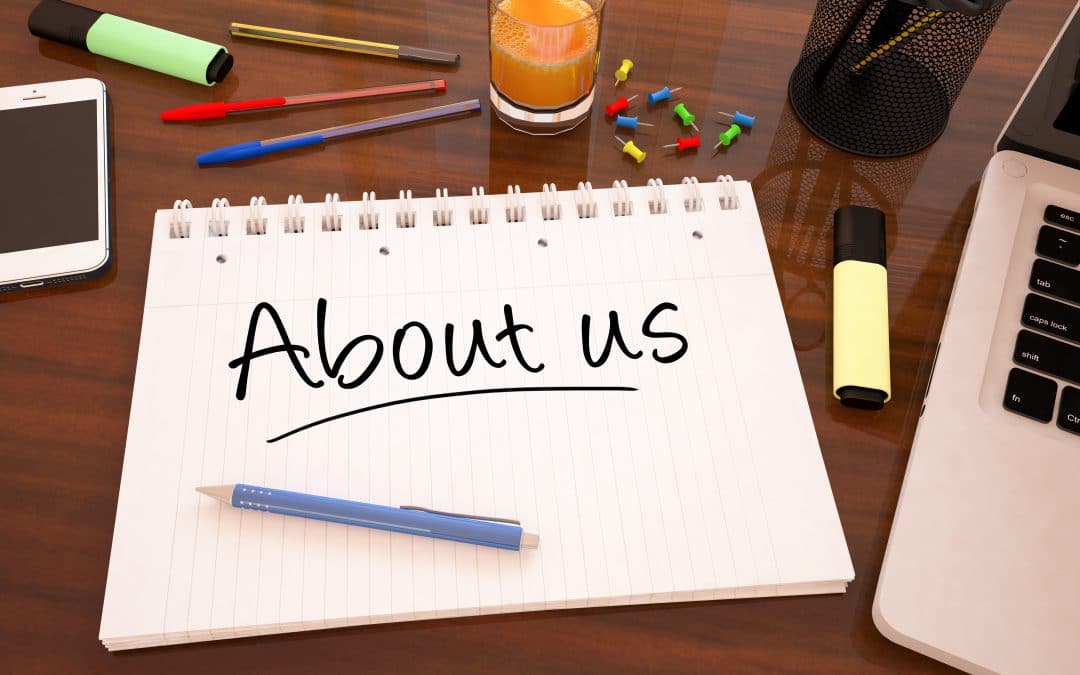It’s no surprise a strong website is imperative in today’s economy. Research shows:
- 81 percent of shoppers research online prior to making big purchases
- 78 percent of local mobile searches result in offline purchases
- 71 percent of B2B researchers begin with a generic search
Across the board, people in all industries are turning to company websites for information about businesses they may want to work with. Does your website provide all the details they’ll need to be convinced to choose you? This is vital to your marketing efforts!
Why You Need an About Page for Successful Marketing
As Emily explained in her post about competitive content marketing tactics, “When it comes to your business’ content, your website is the hub. The whole point is to get consumers to visit your website, see how great your company is, and purchase your products or services. But to be effective you need to set your website up correctly.”
A key point to correct website set up is providing helpful information about who you are and what your brand stands for. An About Page is the perfect place to share these details.
About Pages vs. Electronic Press Kits [Marketing vs. Media Relations]
As you visit some business’ websites, you may notice they have both an About Page and an Electronic Press Kit. While both share helpful information about your company, there is a key difference between them:
- An About Page is written for your target audience to learn who you are and why they should work with you. It should share your main marketing message as well as provide context for your business.
- An Electronic Press Kit is for the media to learn the basics of your business should they choose to share a story about your brand with their readers. You can learn how to create one in this free public relations guide.
How to Create an About Page to Enforce Your Marketing
Although About Pages vary from business to business, there are a few key elements we recommend for each one. As a reminder, make sure any text or images you include on your page reinforce your overall marketing messaging to keep your brand consistent.
- Your mission statement: What does your business stand for? This should be reinforced through all your company’s marketing messages.
- Your brand’s story: How did your business get its start? What drove the founder to open its doors?
- The people behind your brand: While your company itself may be a separate entity for tax purposes, consumers and clients like to see the human side of a business. Who started the organization? Who are the key players?
- What makes you different: What sets you apart from competitors? Why should a potential client work with you rather than another company? Make this abundantly clear in your About Page (as well as in your business’ other marketing messages).
- Where the media can get details: Whether you include your Electronic Press Kit here or post it somewhere else on your website, include a link to it on the About Page so any journalists visiting your site can find the information they need quickly and easily.
As you can see, this is a lot of information! Rather than posting it all on one page of your website, share some of it on the About Page and then have sub-pages clients can visit for more details. This will make it much less overwhelming for them to digest.
Want an example to get you started? Check out Three Girls’ About Page! Hubspot shares 10 fantastic examples of About Pages in this article, too.
Do you want to know more about how to create a strong About Page or other factors you should consider for a successful marketing strategy? Contact us today for a complimentary consultation!
Special Offer:
Sign up for a complimentary consultation during December and receive an Annual Marketing Planning Guide valued at $475! We offer a 30-minute phone consultation with our CEO, and can answer your questions and discuss your specific marketing needs - no strings attached. Call 408-218-2391 or contact us today to arrange your consultation!



